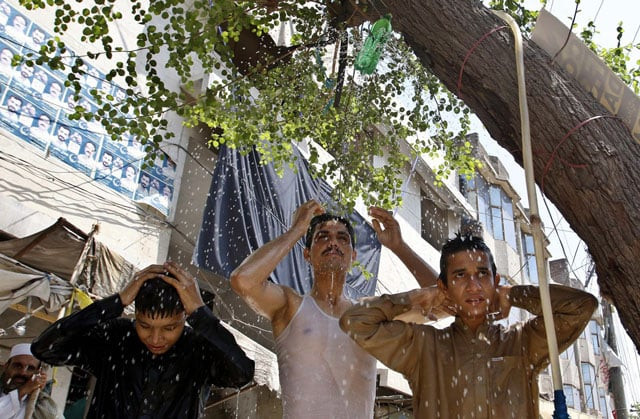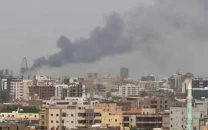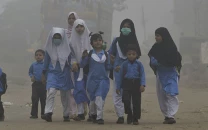Rising mercury exposes gaps in hospital systems
Emergency facilities have no special arrangements for dealing with heatstroke cases

Over the past few years, Khyber Pakhtunkhwa (K-P) has faced a dual climate crisis, with intermittent rainfall in some areas, and an unrelenting heatwave in others, leading to a surge in heatstroke and waterborne illnesses. Despite the worsening situation, authorities have yet to take meaningful preventative steps or establish dedicated heatwave response mechanisms in hospitals.
From Peshawar to Dera Ismail Khan, Lakki Marwat to Mardan, temperatures are soaring dangerously. The Pakistan Meteorological Department has warned of more heat in the coming days, with temperatures expected to reach as high as 50 degrees Celsius in Peshawar; a level of heat that health experts believe is life-threatening, especially for children and the elderly.
"There has been a clear rise in climate-related heat in K-P due to global climate change. Countries that have effectively managed climate challenges must be studied and their strategies should be localized. Infrastructure projects have led to the cutting down of thousands of trees, which were never replaced," noted Professor Dr Muhammad Nafees, Chairman of the Environmental Sciences Department at the University of Peshawar, who believed that unless swift action was taken, the province may see more heatwaves, floods, and natural disasters in the near future.
On the other hand, medical staff in the city's major hospitals are now stretched thin. Dr Ahmad Khan, a medical officer at the emergency department of the Khyber Teaching Hospital revealed that they were receiving 10 to 15 heatstroke cases daily; a number that is steadily climbing. "Most patients are either elderly people or children. Along with heatstroke, we are also witnessing a spike in diarrhea and other gastrointestinal infections, which are directly linked to excessive heat," said Dr Ahmad who urged the public to stay indoors during peak heat hours and increase fluid intake.
At the Lady Reading Hospital Peshawar, the province's largest public health facility, similar concerns were echoed. Muhammad Asim Khan, the hospital's spokesperson, told The Express Tribune that between 50 to 60 patients affected by heat-related illnesses were being admitted daily. However, there was no dedicated ward for dealing with such cases.
"There is no designated facility or cooling center for heatwave patients. We are transferring them to the general emergency medical ward, where doctors and nurses are trying their best to stabilize them. But the volume of patients is increasing fast, and this approach is not sustainable," warned Dr Khan.
As K-P struggles with climate unpredictability, the glaring lack of preparedness is putting lives at risk. With no emergency plan in place, no public awareness campaigns launched, and no infrastructure adapted for high temperatures, the province appears to be dangerously lagging in its response to one of the most predictable yet deadly effects of climate change.
Experts warn that without long-term climate resilience policies including urban tree plantation, public cooling centers, awareness drives, and hospital preparedness, K-P could face even deadlier summers in the years ahead.





















COMMENTS
Comments are moderated and generally will be posted if they are on-topic and not abusive.
For more information, please see our Comments FAQ